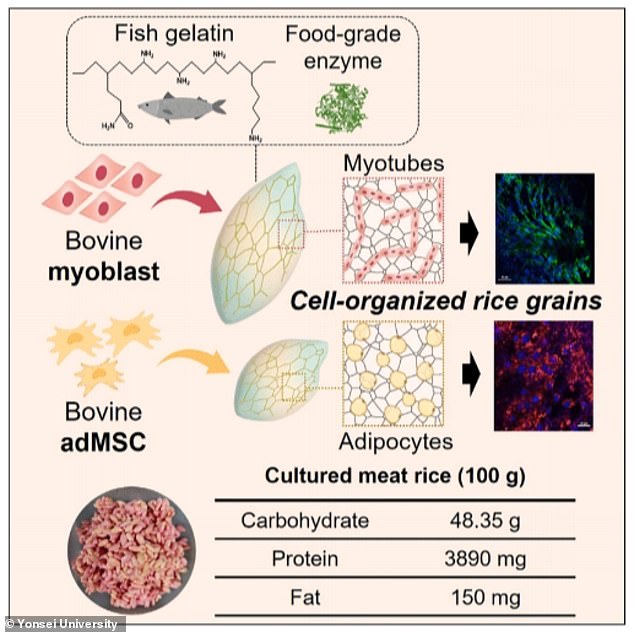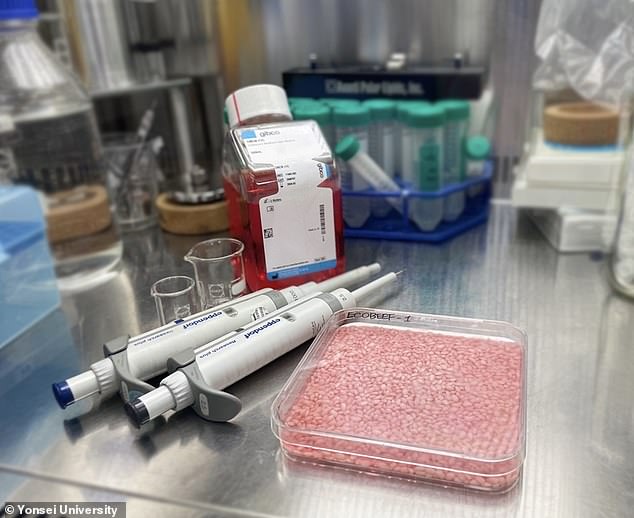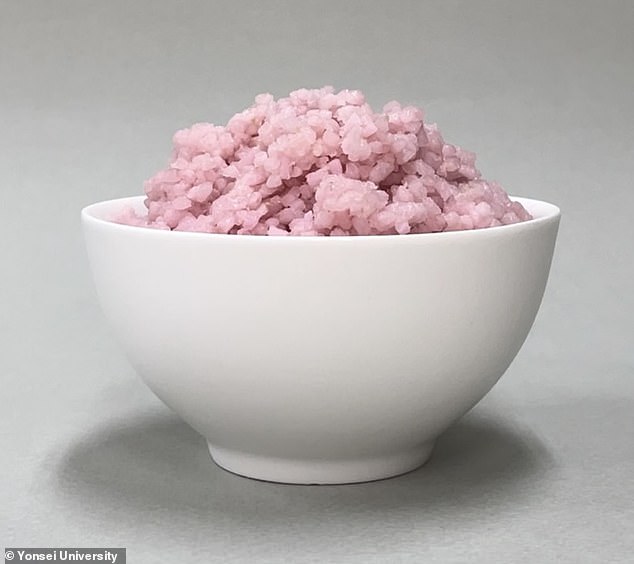- Scientists have grown meat cells inside rice to create an all-in-one ready meal.
- They claim that ‘Frankenfood’ is affordable, tasty and environmentally friendly
From stews to curries, many of the most popular convenience foods include rice and beef.
Now, scientists In Korea they have managed to grow meat cells inside rice grains to create an all-in-one ready meal.
They claim that horrible pink ‘Frankenfood’ is affordable, tasty and environmentally friendly.
Sohyeon Park, from Yonsei University, South Korea, said: “Imagine getting all the nutrients we need from cell-cultured protein rice. Rice already has a high level of nutrients, but adding livestock cells can increase it even further.
“We normally get the protein we need from meat, but meat production consumes a lot of resources and water and releases a lot of greenhouse gases.”
From stews to curries, many of the most popular convenience foods include rice and beef. Now, Korean scientists have managed to grow meat cells inside rice grains to create an all-in-one ready meal.

To create Frankenfood, the team first coated rice with fish gelatin, a safe, edible ingredient that helps cells adhere better to the rice. Beef muscle and fat stem cells were then seeded into the rice and allowed to culture in a Petri dish for nine to 11 days.
Cultured beef is typically grown from cow cells embedded in a “biological scaffold” made of gelatin or collagen, allowing it to resemble real cuts of meat.
Previous studies have shown that it is possible to create products in a laboratory that roughly resemble real steaks and burgers.
In this case, scientists discovered that porous rice grains, which are full of “nooks and crannies,” provided the perfect natural scaffolding for growing meat cells.
To create Frankenfood, the team first coated rice with fish gelatin, a safe, edible ingredient that helps cells adhere better to the rice.
Beef muscle and fat stem cells were then seeded into the rice and allowed to culture in a Petri dish for nine to 11 days.
Researchers say the final product is soft pink rice with a firm bite and a creamy, meaty flavor with hints of almonds and coconut oil.
Mrs Park said: “I didn’t expect the cells to grow so well in rice.
‘I now see a world of possibilities for this grain-based hybrid food.

Researchers say the final product is soft pink rice with a firm bite and a creamy, meaty flavor with hints of almonds and coconut oil.
“Someday it could serve as famine food aid, military ration or even space food.”
For every 100 g of protein produced, hybrid rice releases less than 6.27 kg of CO2, while beef releases 49.89 kg.
Hybrid rice could cost around £1.50 a kilo, while beef costs £15.
The global livestock industry is responsible for more than 14 percent of man-made greenhouse gas emissions, almost as much as road transport, aviation and shipping combined.
Professor Neil Ward of UK Research and Innovation described the study as “promising”.
He said: “While the data on costs and climate impact looks very positive, a critical test is the public’s appetite for these types of lab-developed foods.”
Lab-grown meat products cannot yet be sold legally in the UK.
Last year, Israeli company Aleph Farms became the first to apply to the Food Standards Agency for permission to sell cultured beef steaks. No decision has been made yet.

